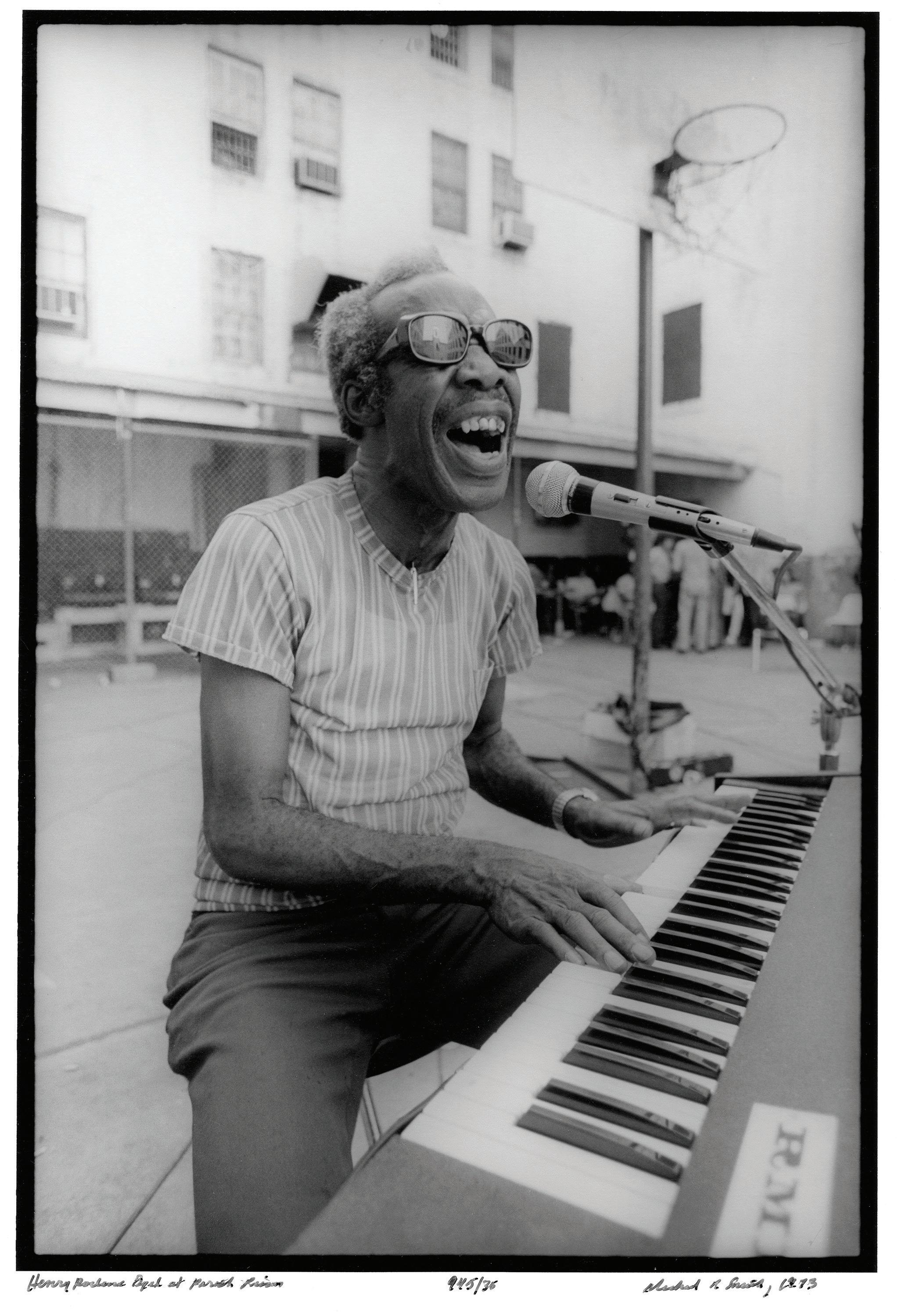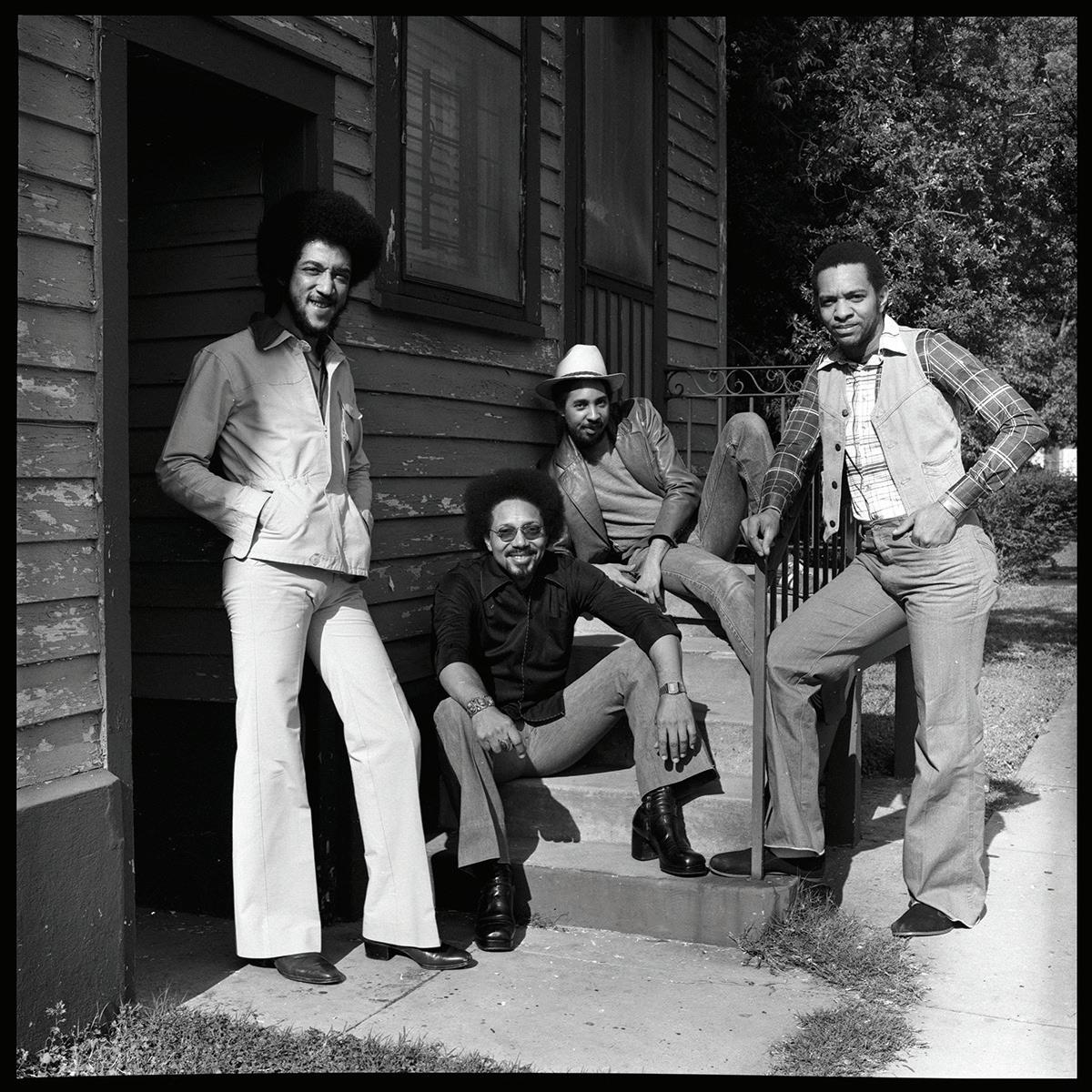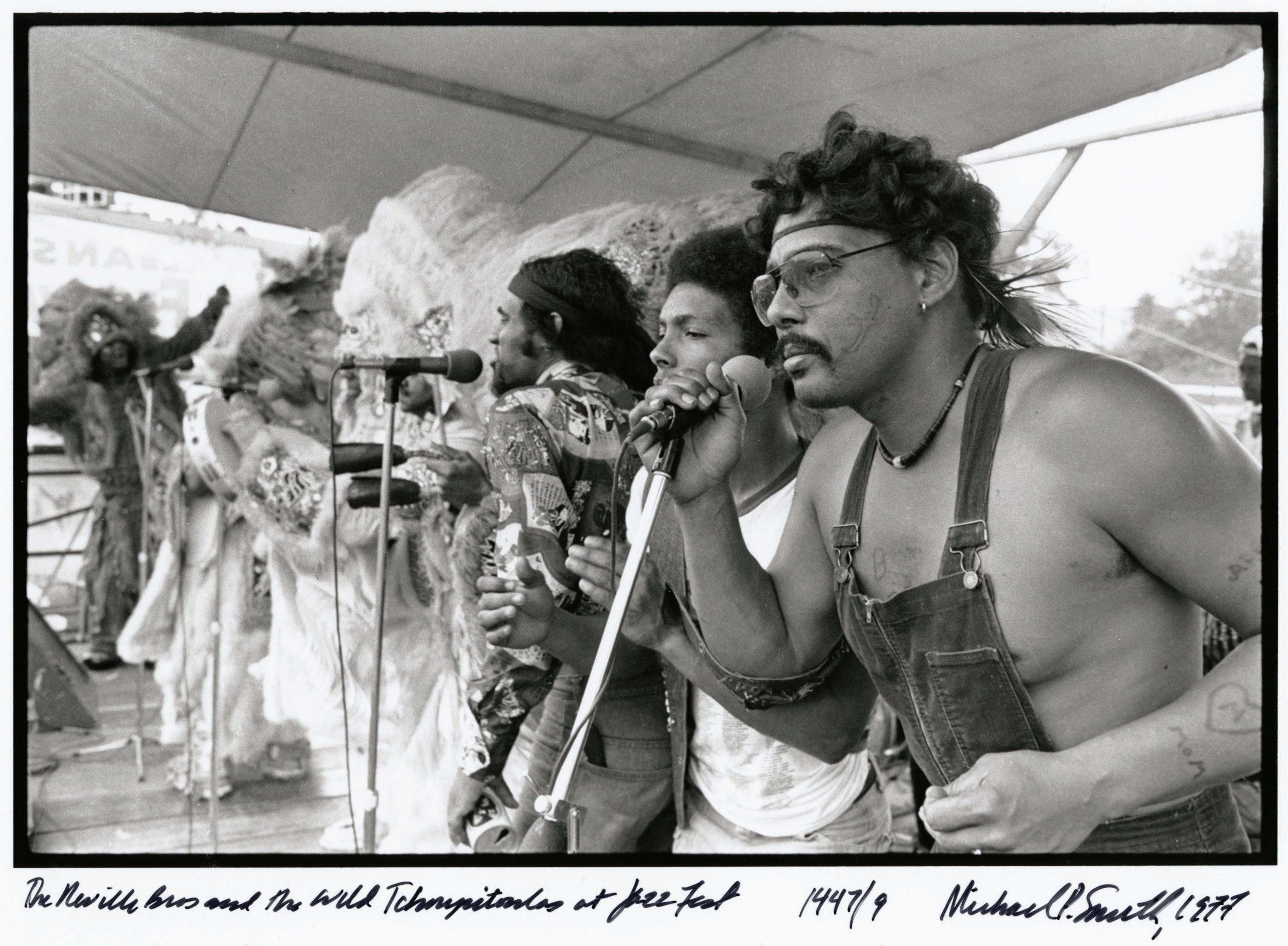
6 minute read
Play Me Something, Mister!
By Jason Berry
The music that pours out of clubs, parties and bandstands during Carnival season revolves around a constellation of classic, well-worn hits that get people out of the chairs, onto their feet, shaking it up. The popularity of these core songs touches the heart of people across the Gulf South who put a premium on a life lived to the fullest. “Mardi Gras Mambo,” “Go to the Mardi Gras,” “Carnival Time,” “Big Chief,” “Do Whatcha Wanna” and “Hey Pocky A-Way” — the latter from The Wild Tchoupitoulas — blast out of radio stations. The songs were recorded decades ago — old songs that don’t seem old, they ripple out with a renewable energy across generations, summoning memories — or spawning new ones — for a season that thrives on dancing.
First on the turntable, the granddaddy of them all: “Mardi Gras Mambo,” recorded by the Hawketts back in 1954, 66 years ago. The loping horns lay out a melodic line, followed by a loud “Uhhhh!” Then comes the honeyed baritone of 16-year-old Art Neville, who wasn’t old enough then to legally buy booze.
The corner of LaSalle and Rampart, in Central City, was long a hub of Black Carnival that drew Indians and brass bands as people meandered down to St. Charles Avenue in time for the Zulu parade. “The combo’s there with a mambo beat” adds intrigue. The song was actually recorded a year earlier by country artist Jodie Levens on the Sapphire label. Lou Welsh, the label owner, and Ken Elliot, a radio DJ who steered him to Chess Records for the Hawketts’ reissue, share credits with Frankie Adams of the original band. Rhythm and blues historian Jeff Hannusch opines that Adams probably wrote the song, and who are we to doubt? The lyrics underwent a major change when Neville and the Hawketts got to work, providing rocket fuel.
Mambo was a Cuban music form, African drumming married to big band arrangements with hot horns that made even people in tuxedos and gowns shake it up. The Caribbean influence on New Orleans rhythm and blues had its greatest expression in Professor Longhair, who kicked the base of the piano like a drummer riding his pedal, his attack on the keys a meld of barrelhouse boogie with a sizzling “mixture of mambo, rhumba and calypso” as Fess himself (Henry R. Byrd) once said.
Longhair’s classic, “Go to the Mardi Gras,” was released in 1959 with a weave of horns and rocking drums as a cushion to those magic undulations of his fingers on the ivories. The wonderful whistling he does before singing gives an ethereal quality to a tune that captures a locomotive movement in the rhythm, like a train rushing down the tracks. It’s the song of a guy heading in for Carnival. Fess originally recorded a version of it called “Mardi Gras in New Orleans” in 1949 with first-person lyrics:
Rampart and Dumaine (across from today’s Louis Armstrong Park) was a 1950s main spot to watch the Zulu parade. On that corner, also, stood J & M Recording Studio, where the venerable Cosimo Matassa recorded Fess and a legion of R&B all-stars — Allen Toussaint, the Nevilles, Mac Rebennack before he became Dr. John, Irma Thomas, Barbara George, Ernie K-Doe, Benny Spellman — how long is the list? Fess’s magic lay in his transfusion of the rhythms of feet on the street into a piano style that sounded like people parading.
We turn now to 1960, and “Carnival Time,” sung by 20-year-old Al Johnson in a joyous high octane with three saxophones roaring out of the box:
“Claiborne used to be our street for Carnival,” recalls Johnson, now a sprightly 81, riding the clouds of local celebrity. “Carnival is fun time. I remember we used to walk from our house in the Lower Ninth Ward to St. Claude Avenue, and go across the bridge — they didn’t have a Claiborne bridge at the time. We partied all down Claiborne. The joints were jamming, packed, like I call ’em in the song. The ‘baby’ is your girlfriend.”
“Big Chief (Part 2)” was a doubleheader as a comeback song for Professor Longhair in 1964, and a paean to the Mardi Gras Indians. Written by guitarist Earl King with a bouncing second-line beat, the lyrics offer a freeze-frame of the urban tribes:

The Meters
Photograph by Michael P. Smith © The Historic New Orleans Collection. Michael P. Smith, who died in 2008, documented the music, culture and folklife of New Orleans. He photographed every New Orleans Jazz & Heritage Festival from its beginning in 1970 until his retirement in 2004.

Professor Longhair
Photograph by Michael P. Smith © The Historic New Orleans Collection.

Neville Brothers and Wild Tchoupitoulas
Photograph by Michael P. Smith © The Historic New Orleans Collection.
Carnival music took a major turn in 1976 when the Neville Brothers — Art on keyboard, Cyril on congas, Aaron on vocals and Charles on tenor sax — came together behind their uncle, George Landry, better known as Big Chief Jolly of an Uptown Mardi Gras tribe. Their album The Wild Tchoupitoulas included the Meters’ rhythm section of Leo Nocentelli on guitar, George Porter Jr. on bass and Joe Modeliste on drums. With Jolly’s bravura vocals, backed by Wild Tchoupitoulas members, the eight songs set a standard that Indian groups have been riffing on ever since. Art’s vocals on “Hey Pocky A-Way” use an old Indian chant as chorus for these song lines that became a classic:
Then, the image of a little boy with a heart of steel segues nicely into child-becomes-man:
By the 1990s, brass bands began adapting Carnival songs for marching arrangements in parades. Even melodies from The Wild Tchoupitoulas were fashioned by big bands for high-end Mardi Gras balls. Rebirth Brass Band, founded by tuba player Phil Frazier and his brother, bass drummer Keith Frazier, in 1983, scored a big one in 1991 with “Do Watcha Wanna.” The easy-rolling circular rhythm with section-riffing horns and Kermit Ruffins’ lyrics — “Do whatcha wanna, Mardi Gras morning” — lays out a verbal groove that, in one of those ironies of the music, slows down the tempo of Mardi Gras. If you’re jumping up and down to Al Johnson’s pipes on “Carnival Time,” the Rebirth message on “Do Whatcha Wanna” is hey, let’s amble, enjoy the walking, costumes, drinking, cooking, eating, and all that comes with the suspension of time on Carnival day.

Rebirth Brass Band
Photograph by Michael P. Smith © The Historic New Orleans Collection.










